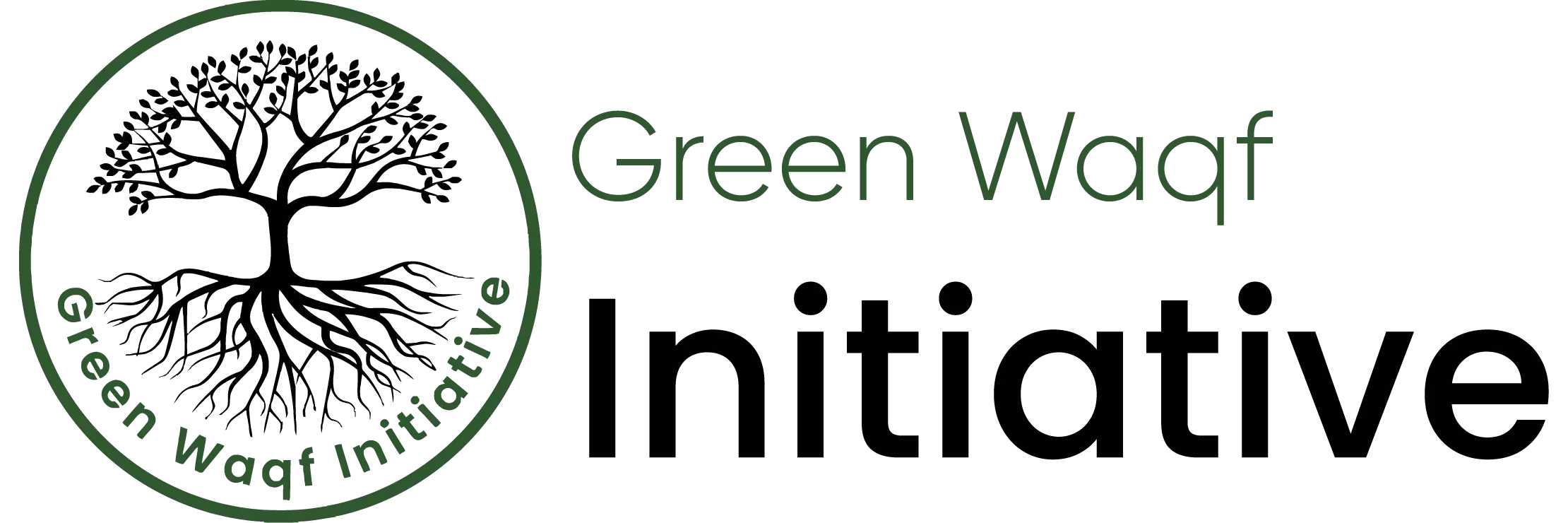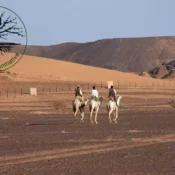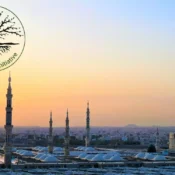
Sudan Environmental Profile
These environmental profiles were produced as part of the Green Waqf Initiative by
the Islamic Chamber of Commerce, Industry and Agriculture (ICCIA). ICCIA believes
that the Islamic concept of Waqf can be used as a social financing mechanism to
combat climate change. Through Waqf, the land is decommodified; therefore, it can be
used only for specific purposes defined by the owner. These purposes can include
reforestation, land revitalization and research centers, among others.
This environmental profile has been developed to assess the ecological situation in
Sudan and is part of a series that covers all ICCIA member countries. These profiles
are meant to be used as a source to assist in policy dialogue, stakeholder engagement,
and strategic planning and to help educate and raise awareness about the social,
cultural and economic risks associated with climate change. The profiles provide
relevant information on pertinent public and private sector policies and programmes
and the country's adaptation priorities and potentials.
Pakistan Environment Profile Team
Author: Fatima Faisal
Editor: Safia Hussain
Table of Contents
- Sudan Environment Profile
- Pakistan Environment Profile Team
- Introduction
- About ICCIA
- About the environmental profile
- Section 1: Country Overview
- General overview of Sudan
- Climate Change Risks
- Sudan’s Commitment Towards Climate Change
- Section 2: Sector-wise climate change causes and effects
- Agriculture sector
- Water sector
- Conclusion & Recommendations
Introduction
About ICCIA
The Islamic Chamber of Commerce, Industry, and Agriculture, an institution affiliated with the
Organization of Islamic Corporation (OIC), aims to strengthen collaboration in the fields of trade,
commerce, information technology, banking, insurance, shipping, joint venture, and many others
within member countries.
ICCIA is the sole representative of the private sector in 57 Islamic member countries and primarily
focuses on creating a knowledge platform for the private sector of the Muslim countries to connect
and learn. It provides visibility to the star performers for future growth and access to new markets.
Additionally, it lays out policy recommendations to enable a private-sector-friendly business
environment in policies, processes, paperwork, and payment system integration, to name a few.
Finally, ICCIA plays an integral role in promoting member country products and increasing access
between home and foreign markets.
About the environmental profile
Several experts claim that insufficient climate control policies have become a 'very serious’ concern
and have been significantly harming a considerable proportion of the world's population.1 Some top
reasons behind climate change include heat-trapping greenhouse gasses, deforestation, use of heavy
machinery, powering buildings, and cutting down on farming livestock.
ICCIA's recent initiative focuses on promoting environmentally friendly and sustainable practices in
member countries to enhance societal impact, minimize waste, and improve living standards.
Sudan ranks amongst one of the worst hit countries due to climate change. Increasing temperatures,
high variability in rainfall, rising sea levels, increased incidence of drought, and higher storm surges
have placed the country at high risk and high vulnerability to climate variability.
Section 1: Country Overview
General overview of Sudan
Situated in north-eastern Africa, Sudan occupies an area of approximately 1,886,068km2 and is the
16th largest country in the world. It is bordered by Egypt to the north, Libya in northwest, Chad in
west, Central African Republic in southwest, and South Sudan in south. Sudan was one of Africa’s
most geographically diverse countries which split into two separate states after decades of regional
conflicts and struggles. Northern Sudan, now officially known as the Republic of the Sudan, consists
of a predominantly Arab population, and Southern Sudan, now officially known as The Republic of
South Sudan is home to a majority population of people with a Black African heritage.
Sudan’s population amounts to nearly 40 million. Major languages spoken are English and Arabic in
most parts of the country and Beja (Bedawi) along the Red Sea. Sudan’s geography is mostly flat
with mountains in the east and west and annual flooding in the south because of the Nile River
system. Port Sudan, Sudan’s principal port, is the country’s main commercial and trading hub that
also connects the Indian Ocean to the Mediterranean Sea.
Climate Change Risks
Sudan is one of the nations that is most susceptible to climate change and variability. The region's
rainfed agriculture and pastoralist systems, which make up the majority of rural livelihoods, have
already been challenged by increased frequency of droughts and high rainfall variability over the
previous few decades. A base of natural resources that is already under duress is further strained by
recurrent conflicts that result in millions of displaced people, inconsistent food production, and
shrinking amounts of productive land and water supplies.2 The biggest emitters include the land-use
change and forestry, agriculture, energy, industrial activities, and waste management.
The image below shows the observed mean temperature in Sudan between 1991-2020.3

This climate-fragility risk brief explains three ways that conflict and fragility in Sudan are
impacted and exacerbated by climate change:
- Increased rivalry over the allocation, usage, and access to natural resources can lead to
conflict because of a combination of climate impacts, environmental degradation, and
population growth. - Due to maladaptation, increased tensions, and conflict, displacement and loss of livelihoods
brought on by climate change. Conflict can weaken local populations' resilience. - A government's legitimacy and capacity may be weakened by inadequate responses to
environmental degradation, climate change, and multifaceted conflict, which in turn fuels
resistance.4
Sudan’s Commitment Towards Climate Change
National Adaptation Program of Action (NAPA)
Sudan ratified the United Nations Framework Convention on Climate Change (UNFCCC) on
November 19, 1993, shortly after the Earth Summit, and pledged to actively cooperate with the rest of
the world to solve the issue of climate change. In addition to creating the Second National
Communication, Sudan submitted its First National Communication in 2003, formed a NAPA in
2007, and is currently putting NAPA Priority Interventions to Build Resilience in the Agriculture and
Water Sectors to Adverse Impacts of Climate Change in Sudan into practice.5
For the systematic incorporation of the key UNFCCC principles into national policy processes, a
deeper examination of these linkages is therefore required. The First National Communication and
NAPA were nevertheless accepted by the Council of Ministers, who in 2010 gave HCENR the order
to coordinate NAPA implementation with the Agricultural Revival Program.6
The National Adaptation Program of Action has been successful in establishing connections between
adaptation to climate change and the Sudanese government's continued efforts to combat poverty.
Adapt for Environmental and Climate Resilience Project
The Adapt for Environmental and Climate Resilience Project (ADAPT!) was launched by United
Nation Environment Program (UNEP) in 2016 and successfully concluded in 2020.7 This initiative
aims to improve international humanitarian response, recovery, and development programmes in
Sudan by increasing understanding of and integrating climate resilience and environmental
management into programme delivery, plans, and policy. It was created to support local communities,
civil society organisations, and government departments in creating novel ideas and long-lasting
systems to better coordinate climate action. The Foreign, Commonwealth and Development Office
(FCDO) of the United Kingdom provided funding for ADAPT!, which was carried out by UNEP in
collaboration with the Sudanese government.8
Green Climate Fund Project
This project assists nomadic pastoralist and subsistence Agro-pastoralist communities in dryland
zones across nine states in Sudan in their efforts to adapt to climate change. Its overarching objective
is to advance an integrated paradigm change in dryland pastoral and farming systems through
improved access to climate-resilient water sources and increased food production system resilience. It
encourages the maintenance of conventional means of subsistence with more robust and sustainable
practices. It aims to assist at least 200,000 households.9
UN’s Sustainable Development Goals (SDGs) in Sudan
The Sustainable Development Goals (SDGs), a set of 17 interrelated and ambitious Goals that address
the main development concerns facing individuals in Sudan and around the world, are being worked
on by the UN and its partners. The United Nations Development Assistance Framework (UNDAF),
which integrates the goals of the 2030 Agenda, is the blueprint for the United Nations Country
Team's (UNCT) support to national development priorities in 2018–2021.10
In accordance with the goals of the SDGs, this strategy shows how the UNCT intends to work with
partners. In accordance with the UNDAF's guiding principles of national ownership, partnership,
transparency, and accountability, the framework was developed in close cooperation between the
UNCT, the Government of Sudan, and civil society, ensuring that it is closely aligned with the
national development agenda. This third UNDAF for Sudan acts as an integrated strategic planning
framework for UN development programming and will direct agency-specific programs in the nation
to provide greater coherence and results orientation in the UN's development efforts, which will
improve development outcomes.11
Section 2: Sector-wise climate change causes and effects
Agriculture sector
Sudan has a predominately rainfed agricultural that significantly contributes to its GDP, foreign
exchange revenues, and way of life. However, there is an urgent need to evaluate and examine the
impact of these modifications given the ongoing and future environmental changes.
The findings of the Agriculture and Forestry Sector study suggest that humid agroclimatic zones
would migrate southward, making agriculturally productive areas in the north increasingly unsuitable.
For instance, it is anticipated that between 2030 and 2060, millet output will decrease by 15% to
62%, sorghum by 29% to 71%, and gum Arabic by 25% to 30% in the Kordofan Region.12 Farmers
and pastoralists in the conventional sense will be most impacted. The current process of
desertification in the Kordofan Region and elsewhere is anticipated to be accelerated by temperature
rise, precipitation variability, and mounting socioeconomic pressure. In such a situation, the amount
of arable land and the gum belt would diminish; thus, food security and local revenue would
drastically decline.
Water sector
Water availability is a perennially critical issue in an extremely arid country. Reduced precipitation,
elevated temperatures, and/or higher evaporation all pose serious risks for Sudan. These results
suggest that the Kordofan Region's most pressing problem in the next years could be lack of water.
According to the water assessment, the amount of soil moisture will decrease as the climate
changes.13 A water crisis is anticipated to result from a combination of water consumption,
population increase, high rates of evaporation, and high rainfall variability.
In its sector evaluation, the World Bank offered specific suggestions for how Sudan should address
its water problems and strengthen its ability to withstand severe weather, including:
- Expand the Ministry of Irrigation and Water Resources' capabilities, organizational setup, and
operational performance. - Attract better investors to aid Sudan in financing additional WSS and irrigation projects.
- Start investing in the public sector to find areas that need work.
- Perform more in-depth assessments and diagnostics of important basins and irrigation plans
- Enhance the scheme staff's capability development.14
Conclusion and Recommendations
Sudan has experienced violence and civil war for many years, and the country is still unstable,
particularly in areas that border South Sudan and the Darfur region, which just gained
independence.15 Planning for climate change over the long run may not appear necessary or practical
during emergencies and times of conflict. Dealing with long-term challenges and root causes of
conflict is essential because temporary solutions (like political agreements) to Sudan's protracted
conflicts haven't always worked or held up over time.
However, it is crucial to understand that if left unattended, climate change can disrupt several primary
operations in Sudan and worsen living conditions. Realizing the cruciality of attending to climate
change conditions must become a top priority in Sudan if the country wishes to improve in the future.
Small efforts such as integrating climate change adaptation with wider development and peacebuilding processes or promoting use of fuel-efficient stoves in camps for refugees and internally
displaced people (IDPs) can take the country’s efforts to promote sustainable practices a long way
ahead and help combat climate change.



